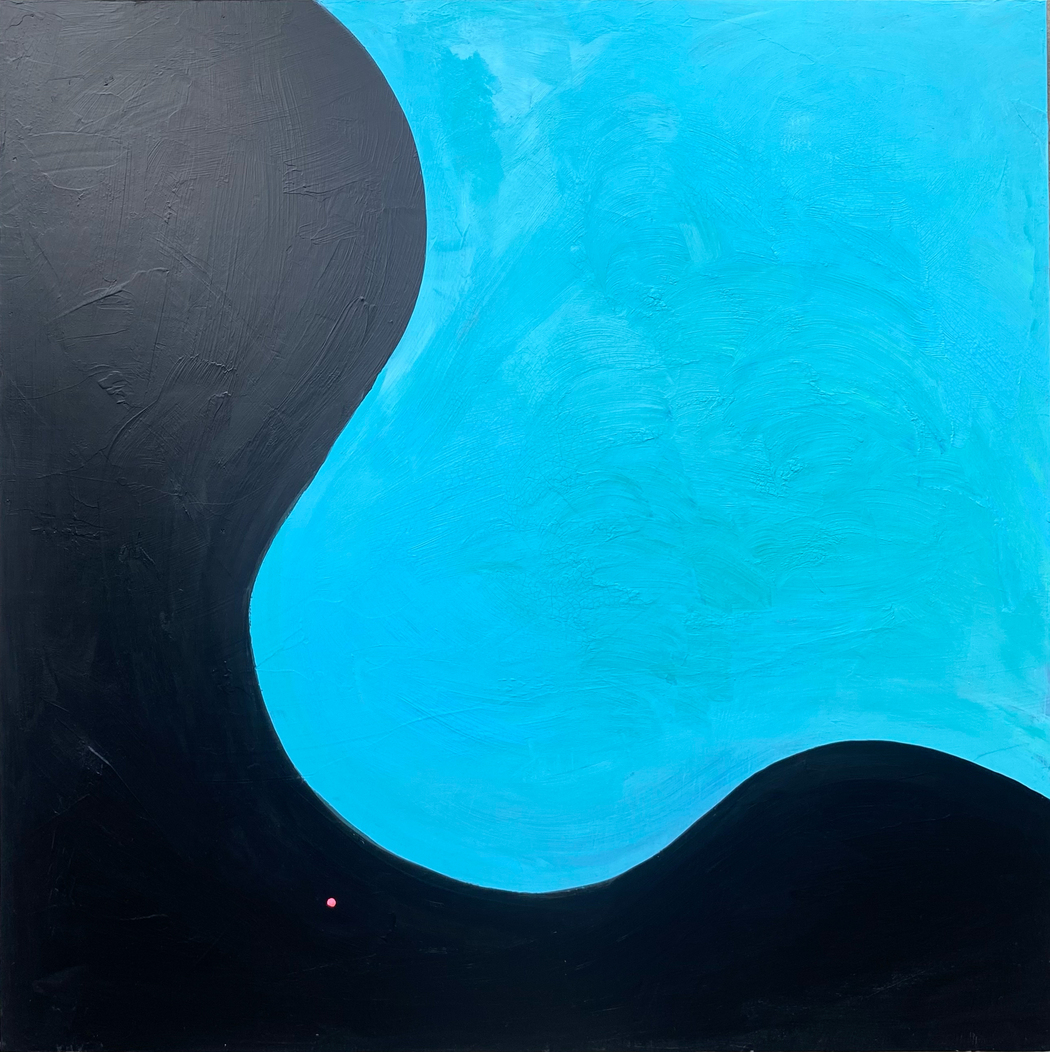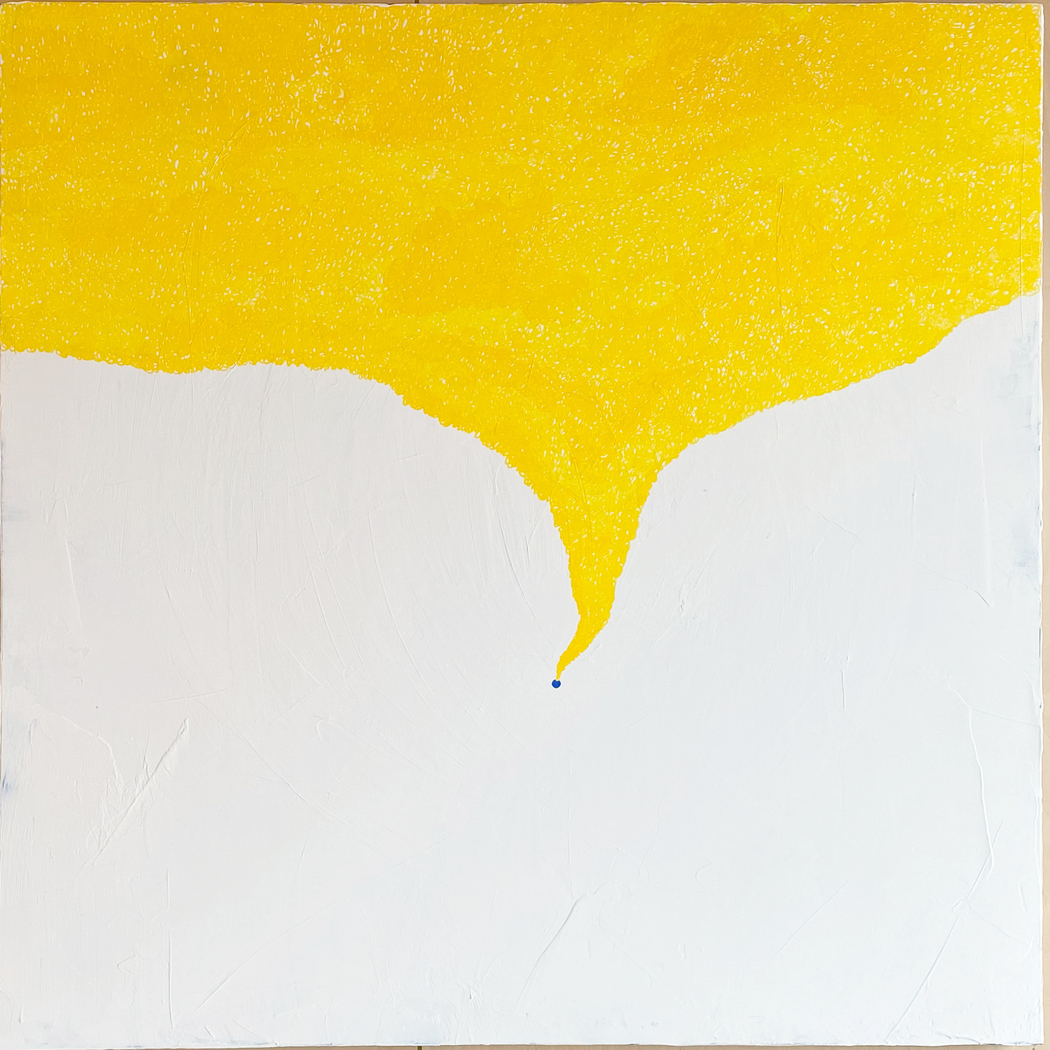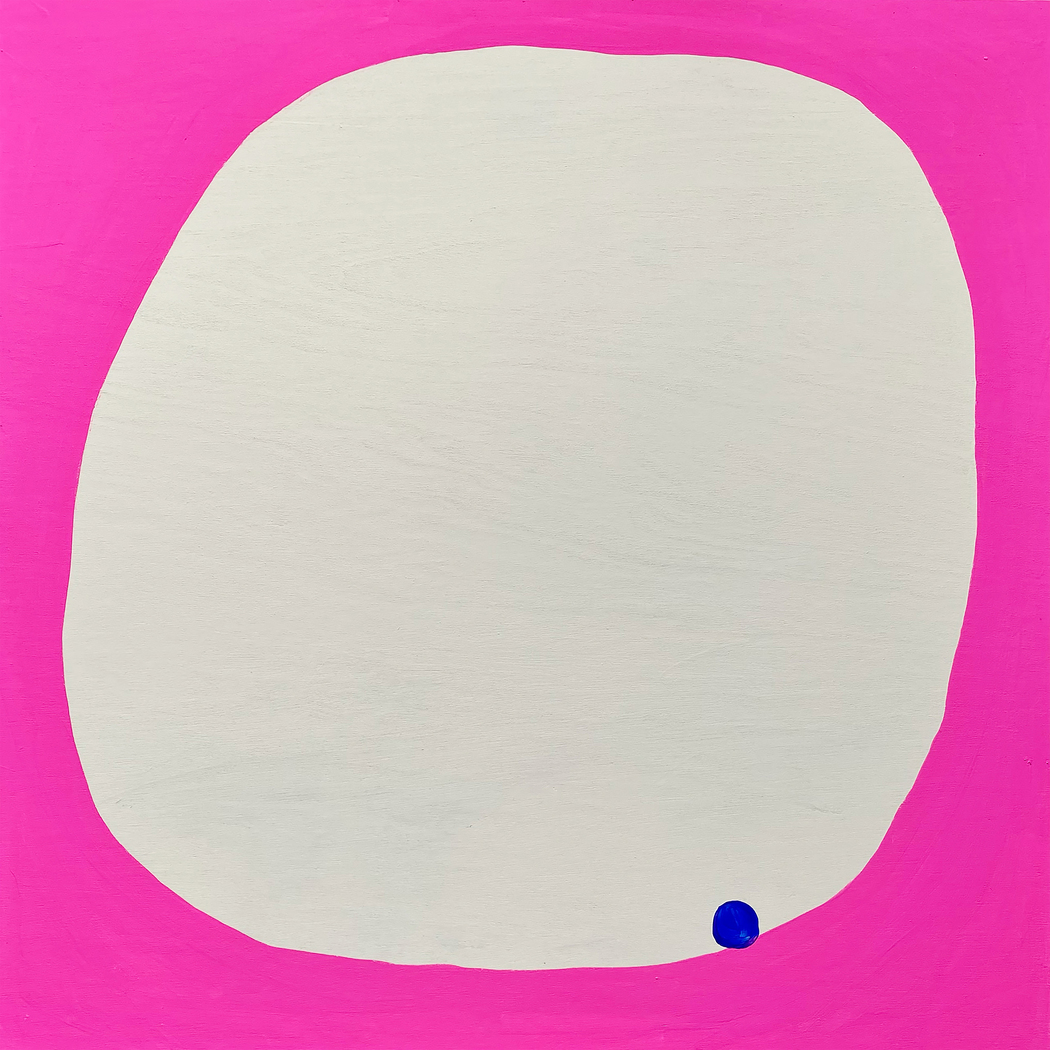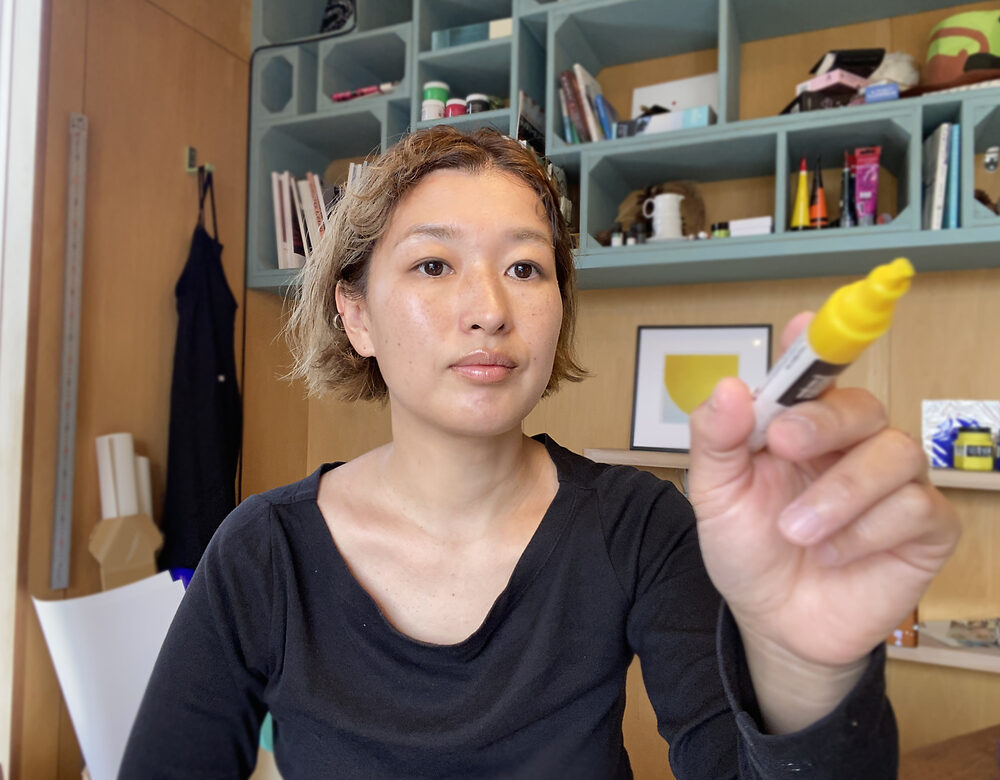Sachiho
Year of birth: 1984.
Where do you live: Mie, Japan.
Your education: I graduated from Nagoya University of Arts and Sciences, Department of Design, Media Formation Department in 2007.
Describe your art in three words: Universe / Non physical / Life.
Your discipline: Non physical graphic.
Website | Instagram
Your work blends both painting and design, creating a unique balance between the two. How do you navigate this duality in your creative process?
For me, the roots of my work go back to the art classes I took as a child. I’ve drawn many pictures, including watercolors. I studied design at university and created many graphics for my advertising design work. What I find most interesting is the simplicity and sharpness of the designs, and their ability to convey things and information through simple expressions. I often get ideas from dreams or flashes of inspiration, and often I draw what I saw in my dreams exactly as it is and it is already a finished design. However, the problem is that very emotional and painterly ideas come to mind, and when I draw them I feel like they are somehow different, so I often end up deforming or adjusting them as if it were an occupational hazard to finish them into designs. There are also works that I have created by converting hand-drawn drawings into design data. I guess my style is to take something as if it were a painting and finish it into a design.
Can you explain the meaning behind the recurring use of color and shape in your artworks? How do they connect to your message of love and life?
Blue, yellow, and red are the colors that often appear in my work. The great masters of the past have expressed these three primary colors in various ways. As I moved my hands freely to paint as I wanted, these three primary colors came naturally. Eventually, my own meaning of the colors developed, and later I was surprised to learn that many great masters used the three primary colors in their own ways. For me, the three primary colors represent:
Blue – Earth, love, reality, physicality, human ugliness, sadness, grief, hatred, chaos, the power to overcome and heal them; Yellow – dark, unconditional love, gratitude, bliss, abundance, joy, happiness, Amaterasu (The Sun), high vibration; Red – passionate, enthusiasm, anger, resentment, roughness, strong energy. What I express is always non-physical energy, the emotions people have, and the wisdom from the origin of the universe that transcends human understanding, and I paint them as I feel them. The wisdom from the universe is always made of love from the universe that looks down on us, and it teaches us that even the most difficult things are filled with the essence of a wonderful life. When I am working on a piece, I receive the wisdom of the universe through inspiration and images of the issues and worries I am working on at that time, and these become the title of the design or work, or a message-like sentence. The universe is myself, and the fact that the universe of my inner self resonates with the vast universe (reality) that spreads out in the sky also tickles my curiosity. So although I can never do anything great like make someone happy, I would be very happy if the messages I receive could have some kind of impact on people’s hearts.
 Sachiho
Sachiho
How has becoming a mother influenced your artistic journey? Do you feel that your experiences as a parent have shaped the themes in your art?
All of this artistic endeavor came about after I became a mother. Before that, I never even allowed myself to paint, which is what I love. I was too busy, materialistic, believed hard work pays off, and was always unhappy. As I had children, I was confused and bewildered at first by the constant task of remembering my original, unique self. It was my children who guided me in my exploration of the non-material world. Before you know it, people forget what is important and start chasing only visible results, but even for us, even as humans, our material bodies are only 5% or less of the whole, and no one pays attention to the grander self, including the non-material mind, emotions, consciousness, dreams, etc., but only focuses on plated trophies and banknotes with numbers on them. Even though if we really want those things, it is essential to look at what we cannot see. Everything I experience through children is the source of my current work. Children just came from space! I’ve been used to the earth for 40 years, so I’m ingrained with humanity. It’s most effective to have children teach me about high-vibe non-physical things.
You’ve been selected for notable exhibitions, such as the 50th Lahti International Poster Triennial and the FREEDOM OF EXPRESSION Poster Exhibition. What does being part of these exhibitions mean to you and how do they impact your approach to art?
For me, being selected for or entering an overseas exhibition expands the possibilities for meeting friends and people who have similar sensibilities to me. It also gives me confidence and courage to create art. I sometimes think about this when I’m painting abstract paintings. I wonder how my non-verbal communication will spread, or whether it is just self-satisfied and complacent. However, if I broaden my horizons, I see that many countries, including Europe, have cultures that use the same non-verbal communication, metaphysics, and non-physical communication as art, so I always try with the faint hope that if many people see my work, they may be able to understand what I want to say.
 Sachiho
Sachiho
In your artist statement, you mention conveying profound messages about life and love. How do you ensure that these themes resonate universally with a global audience?
I myself am constantly experimenting with how my work will resonate with people. The energy of colors and shapes is immeasurable. They captivate people and stimulate their imagination. The works I create with love have my own intentions and contain many messages, the hints of which can be found in the titles and the texts I sometimes accompany the works. However, by allowing people to freely view the works, the viewers’ feelings will be expressed as impressions, which are different for each person. This conversation with one’s inner self is the love I want to convey, and a gift from the universe. Some people may have an idea of “what to do.” We all have the ability to feel free, live freely, and be rich. I hope to be one of those artists who have conveyed philosophy and universal wisdom to their audiences through their works.
How has your background in design influenced your approach to creating artwork, and what challenges or advantages does that background bring to your creative expression?
I studied design at university and after graduating, I worked in advertising design for a long time. This has given me more variety in the way I finish my work, but sometimes it has left me unsure of where I want to finish. Each time I do this I come into contact with the works of other artists, and the works that I am drawn to include those of minimalist artists such as Yves Klein, Kandinsky, and Alvar Aalto. I feel as though artists of the past are always teaching me that it’s okay to live that way. As I answered in the previous question, their works are eloquent and give the audience many ways of living and philosophies. I always want to be like that. I would like to further improve my work so that the non-material message can be easily conveyed to many people.
 Sachiho
Sachiho
Looking towards the future, what do you hope to explore next in your art? Are there any new mediums or concepts you’re eager to dive into?
For me, creating art is my life itself, so I don’t think I’ll stop exploring this until the end of my life. Ideas come to me every day, and I draw every day. In the future, I would like to try using more colors, and I think the shapes will become more diverse. More than anything, I would be happy if I could be filled with love, and spread that overflowing love to others as well. Thank you. I love you.


Leave a Reply